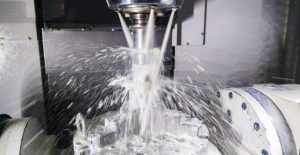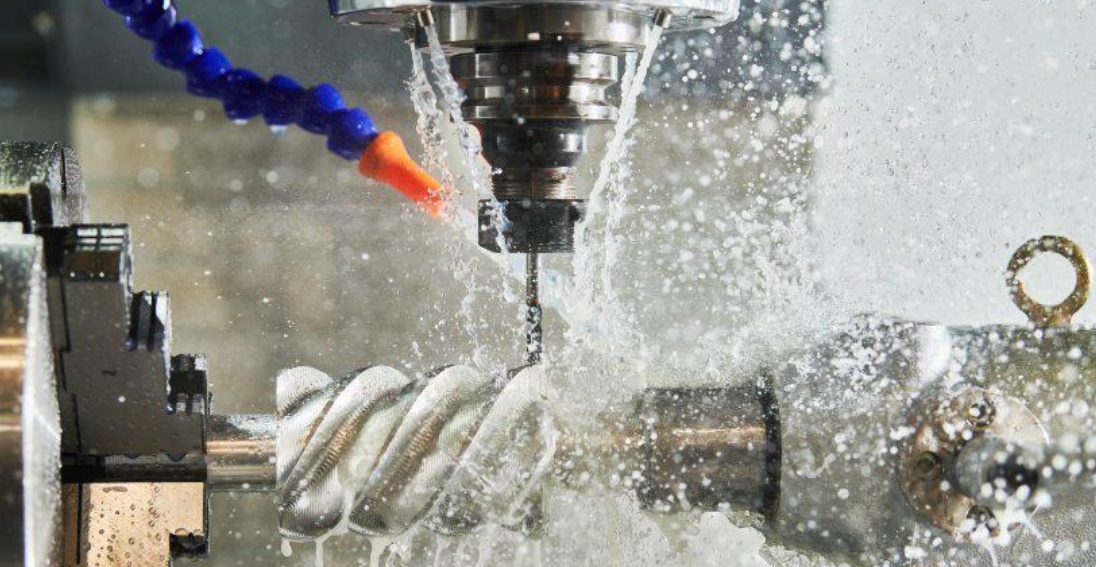
Fungal infestation due to plant downtime
«Protect cooling lubricants from germs»
Water-mixed cooling lubricants are an ideal habitat for various fungi and bacteria. The microorganisms or their spores are ubiquitous. They get into the systems primarily through the air and through contact with human skin. Preservatives prevent many germs from multiplying. Others cannot tolerate oxygen and are deactivated by the circulation of the cooling lubricant. However, they come to life during a longer system downtime.
What do microorganisms do to cooling lubricants during system downtime?
Living microorganisms feed on components of the cooling lubricant, excrete metabolic products and multiply. During operation, the mixture of water and concentrate is constantly circulated. The intensive contact with the oxygen in the air and the effect of the preservatives prevent the metabolism of the organisms.
When the system is at a standstill, the liquid is still. Penetrated tramp oils collect on the surface, solid particles sink to the bottom. New conditions arise at the interfaces. Then the fungi and bacteria gather in the places that offer them comfortable conditions. Those who need oxygen stay on the surface. Those who are harmed by oxygen sink to the bottom. Fungi settle on the machine parts. When each has found its place, growth and reproduction begin.
Consumption of the cooling lubricant components
Water-miscible cooling lubricants are a carefully composed mixture of substances that fulfill very specific tasks:
- Lubricants to reduce friction between tool and workpiece
- Surfactants to form a stable emulsion of water and oil
- Defoamers that suppress the foaming caused by surfactants
- Inhibitors that ensure corrosion protection for machine parts and workpieces
- Biocides to prevent the multiplication of germs
It is easy to understand that the whole system is no longer up to its task when individual components slowly disappear. In the event of a plant standstill, the degradation processes are intensified.
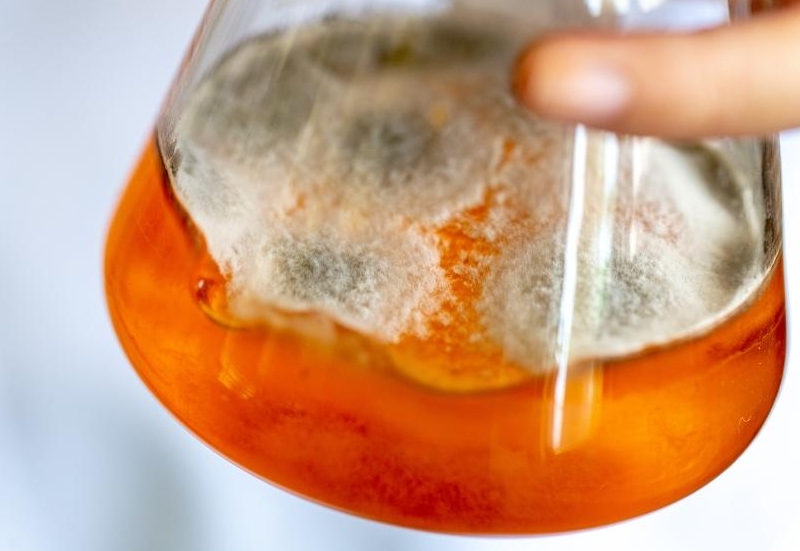
Accumulation of metabolic products in the plants
The microorganisms break down chemical compounds into their components and convert them into other substances. Oils become carbon dioxide and water, and fragments of the long-chain compounds also remain. Strong-smelling hydrogen sulfide is formed from sulphur-containing molecules. Nitrogen compounds are converted to harmful nitrite.
The metabolic products accumulate in the cooling lubricant and throw the system out of balance.
Growth Of Biomass
The microorganisms themselves bring another problem. They form biofilms that clog the pipelines and parts of the systems can stick together. Initially, these are greasy, barely perceptible deposits of germs and metal abrasion. If countermeasures are not taken, biofilm mats develop over time that can be several centimeters thick. If this happens when the systems are at a standstill, they can no longer be commissioned properly.
Why not use effective biocides that kill all microorganisms – even when the system is idle?
The effectiveness of biocides depends on their concentration and their ingredients. It should be borne in mind that these are poisons that can also be dangerous for humans. Therefore, these substances are subject to the strict regulations of the Biocide Ordinance.
The permitted ingredients usually act selectively. That is, some kill fungi, others bacteria or algae. If the system is idle for a long time, germs can creep in that are not caught by the preservatives used.
As few biocides as possible are used. The concentration must be just sufficient to kill the target organisms. If the composition of the cooling lubricant changes, this also affects the biocide concentration. If it falls below a certain limit, individual germs can get used to the substances and develop resistance. Then the preservative no longer works.
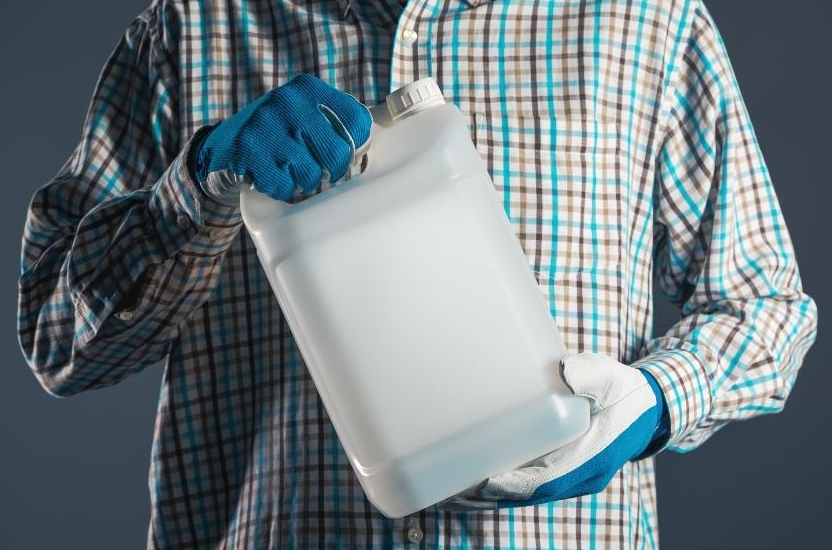
How can cooling lubricant emulsions be protected from infestation?
The concentration specified by the manufacturer must be strictly adhered to when preparing the water-miscible cooling lubricants. Then the preservative develops its full effectiveness. During operation, the composition must be checked regularly and the preservative must be replenished according to the manufacturer’s instructions. Special conservation measures are required before a longer system downtime. If a longer standstill is planned, contacting the manufacturer will help to find suitable means for preserving the systems.
The cooling lubricant concentration can best be determined with a refractometer. Depending on the result, the concentration is brought back into the required range by adding water or concentrate.
In addition to the concentration, the pH value and the nitrite content can be determined. Test strips that are dipped into the liquid are available from specialist retailers for both values. The discoloration of the indicator fields on the strips is compared with a scale on which the pH value or nitrite concentration can be read.
If it contains nitrite, if the pH value is below 7 or if the appearance and smell have changed, germs have probably developed. A suitable disinfectant should then be requested immediately from the manufacturer. If the microorganisms multiply in the systems for a longer period of time, the cooling lubricants cannot be brought back into a usable condition.
To prevent contamination, cooling lubricants must always be mixed with fresh drinking water. Regular machine maintenance and the ongoing separation of chips and foreign oils from the cooling lubricants in filters or separators are essential to protect against fungal infestation and germ infestation and also improve corrosion protection.
What to do if the cooling lubricant emulsion is contaminated after a system standstill?
If the cooling lubricant emulsion has “tipped over”, the only thing that will help is completely emptying the system, using system cleaners and thorough mechanical cleaning. Particular importance should be attached to the elimination of biofilms.
The main cause of film formation is the fungal attack on a system. The fungi grow on the surfaces of the plant components. They are often not detectable in the liquid. Other microorganisms, dust and metal debris accumulate on the fungal cultures. If the biofilms are not completely removed, the system will be contaminated again shortly after refilling. Cooling lubricant manufacturers have special chemical system cleaners available for cleaning systems after fungal infestation, which can also reach places that cannot be reached by mechanical means.
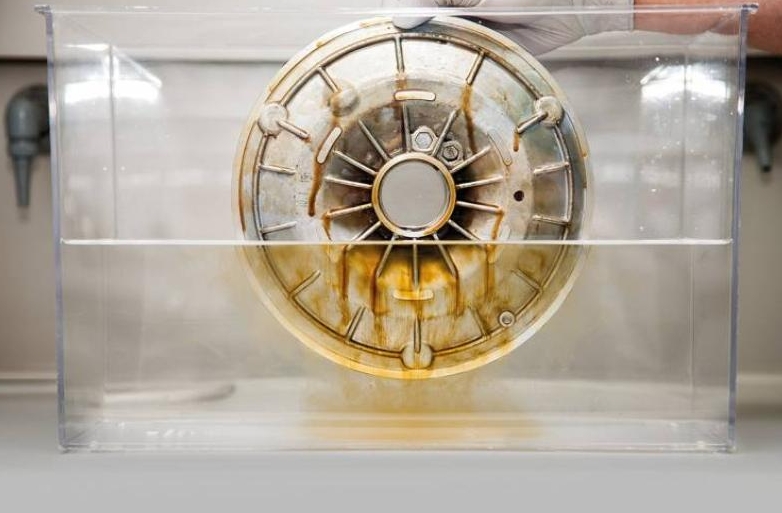
The effort to get a plant ready for operation, in which germs have spread during a longer standstill, is considerable. Machine care, care of the cooling lubricants and preventive measures in the case of foreseeable system downtimes can avoid this effort.

